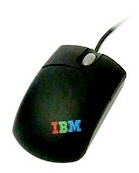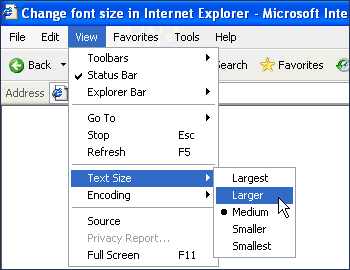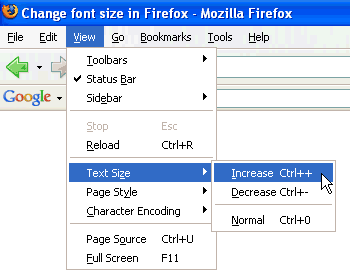Wireless internet is not just "out there" for you to connect up to. You need to take steps, whether it's setting something up, paying for something, or at a minimum, asking for permission.
It's definitely not the case that you can just grab a wireless card and suddenly be connected anywhere you want. The wireless capabilities of your computer are only half of what's needed.
WiFi
WiFi is a medium range wireless networking protocol. By medium range, I mean that its range is typically around 30 to 300 feet, depending on conditions. That means it's something you need to be fairly close to.
The most common WiFi setup is to get a WiFi router or access point, and connect it to your own wired internet connection. For example, you might upgrade and get a DSL connection, and then place a WiFi router on that connection so that you can get the internet wirelessly anywhere in your home.
The second most common WiFi setup is the public WiFi hotspot. This is exactly the same as what I've described you do in the home: the hotspot owner has a wired internet connection to which they've connected a WiFi router or access point, and explicitly left it in the unsecure open mode for anyone to use.
WiMax
WiMax is a longer range wireless technology; its range is typically measured in single digit miles. Much like cellular, which I'll discuss in a moment, WiMax uses a network of transmitters (equivalent to WiFi access points, but much more powerful) to give a large geographic area of coverage.
You get WiMax by signing up for WiMax service with a provider. They'll then provide you with the hardware and account necessary to connect up. The WiFi ability of your laptop has nothing to do with this; WiMax is a different technology.
Right now WiMax appears to be struggling, but for business, not technical reasons as I understand it. Coverage is limited and prices, last I checked, are quite high for the average consumer.
Cellular
The cellular phone network is, essentially, a large digital network so it's no surprise really that it can be used for internet connectivity as well. The coverage area is perhaps the largest of all - pretty much anywhere your cellular phone will work. It's not as fast as WiFi or WiMax, but that's improving over time.
Like WiMax you'll typically need to sign up for a data plan with your cellular carrier, and also like WiMax you'll need additional hardware - your WiFi capability has no relationship to cellular. The additional hardware might be as simple as a cable or Bluetooth connection to your existing phone, or it might be an additional cellular network adapter for your computer.
There are also third parties such as Clearwire who use the cellular network to provide wireless internet without involving your cell phone or requiring that you sign up with a cellular provider. For a monthly fee, they provide a small box that looks somewhat like a wireless access point that handles all the magic of connecting up to the cellular network to provide connectivity.
BlueTooth
No, it's not an option, but I have to mention it because many people seem to think it is, since it's "wireless".
Bluetooth is an extremely short-range wireless connectivity technology. By extremely short range, I mean 10-30 feet. Just far enough to connect to, say, your wireless keyboard or mouse. It is not a means to get wireless internet connectivity. When it's used in conjunction with something like your cellular phone, it's the cellular network that's providing your internet. Bluetooth is just providing that last hop between your cell phone and your computer.
This is typically the response I get, "proving" I'm wrong, and that there must be WiFi everywhere.
Take the original question: "I can get on the internet from my iPod at the edge of my property".
That's not terribly surprising. The iPod uses WiFi, and chances are there's simply an open WiFi access point close enough to that side of your property so as to be in range.
The point is that it's someone else's WiFi.
Do you have permission to use it?
Someone else is paying for it. They're presumably paying for a wired connection and have purchased the hardware to set up the WiFi access point. Just because you can connect doesn't mean that it's appropriate for you to do so. (In some cases it might even be illegal.)
Even if it's an open WiFi hotspot - perhaps a coffee house - it's their connection and they set the terms. Typically their terms are such that the WiFi is provided for their customers, not just "anyone in range".
If it's a neighbor ... well, they should have set up encryption to prevent just this scenario, but even if they didn't that doesn't mean it's appropriate for you just to connect.
Ask first.
If they give you permission, then your solution might be to try a WiFi repeater or range extender in your home, or getting a larger antenna on your wireless device. I'll caution that this isn't always simple. Wireless networking seems to be partly magic, but it's the direction I'd steer you in once you had permission to do so.
But remember, if you're using someone else's internet connection they can monitor your traffic.
In the long run, my actual recommendation is to upgrade to DSL and get a WiFi router of your own.
Be sure to password protect that WiFi connection so that someone doesn't steal your internet connection because they just happen to be close enough.
It's definitely not the case that you can just grab a wireless card and suddenly be connected anywhere you want. The wireless capabilities of your computer are only half of what's needed.
•
There are several approaches to getting a wireless internet connection.WiFi
WiFi is a medium range wireless networking protocol. By medium range, I mean that its range is typically around 30 to 300 feet, depending on conditions. That means it's something you need to be fairly close to.
The most common WiFi setup is to get a WiFi router or access point, and connect it to your own wired internet connection. For example, you might upgrade and get a DSL connection, and then place a WiFi router on that connection so that you can get the internet wirelessly anywhere in your home.
The second most common WiFi setup is the public WiFi hotspot. This is exactly the same as what I've described you do in the home: the hotspot owner has a wired internet connection to which they've connected a WiFi router or access point, and explicitly left it in the unsecure open mode for anyone to use.
"The most common WiFi setup is to get a WiFi router or access point, and connect it to your own wired internet connection."
The key take-away here for WiFi is that it's not everywhere - you need to either setup a WiFi access point yourself that connects to your wired internet connection, or you need to be close enough to a free hotspot to make use of it. (More on that below.)WiMax
WiMax is a longer range wireless technology; its range is typically measured in single digit miles. Much like cellular, which I'll discuss in a moment, WiMax uses a network of transmitters (equivalent to WiFi access points, but much more powerful) to give a large geographic area of coverage.
You get WiMax by signing up for WiMax service with a provider. They'll then provide you with the hardware and account necessary to connect up. The WiFi ability of your laptop has nothing to do with this; WiMax is a different technology.
Right now WiMax appears to be struggling, but for business, not technical reasons as I understand it. Coverage is limited and prices, last I checked, are quite high for the average consumer.
Cellular
The cellular phone network is, essentially, a large digital network so it's no surprise really that it can be used for internet connectivity as well. The coverage area is perhaps the largest of all - pretty much anywhere your cellular phone will work. It's not as fast as WiFi or WiMax, but that's improving over time.
Like WiMax you'll typically need to sign up for a data plan with your cellular carrier, and also like WiMax you'll need additional hardware - your WiFi capability has no relationship to cellular. The additional hardware might be as simple as a cable or Bluetooth connection to your existing phone, or it might be an additional cellular network adapter for your computer.
There are also third parties such as Clearwire who use the cellular network to provide wireless internet without involving your cell phone or requiring that you sign up with a cellular provider. For a monthly fee, they provide a small box that looks somewhat like a wireless access point that handles all the magic of connecting up to the cellular network to provide connectivity.
BlueTooth
No, it's not an option, but I have to mention it because many people seem to think it is, since it's "wireless".
Bluetooth is an extremely short-range wireless connectivity technology. By extremely short range, I mean 10-30 feet. Just far enough to connect to, say, your wireless keyboard or mouse. It is not a means to get wireless internet connectivity. When it's used in conjunction with something like your cellular phone, it's the cellular network that's providing your internet. Bluetooth is just providing that last hop between your cell phone and your computer.
•
"But I can connect without having done any of that."This is typically the response I get, "proving" I'm wrong, and that there must be WiFi everywhere.
Take the original question: "I can get on the internet from my iPod at the edge of my property".
That's not terribly surprising. The iPod uses WiFi, and chances are there's simply an open WiFi access point close enough to that side of your property so as to be in range.
The point is that it's someone else's WiFi.
Do you have permission to use it?
Someone else is paying for it. They're presumably paying for a wired connection and have purchased the hardware to set up the WiFi access point. Just because you can connect doesn't mean that it's appropriate for you to do so. (In some cases it might even be illegal.)
Even if it's an open WiFi hotspot - perhaps a coffee house - it's their connection and they set the terms. Typically their terms are such that the WiFi is provided for their customers, not just "anyone in range".
If it's a neighbor ... well, they should have set up encryption to prevent just this scenario, but even if they didn't that doesn't mean it's appropriate for you just to connect.
Ask first.
If they give you permission, then your solution might be to try a WiFi repeater or range extender in your home, or getting a larger antenna on your wireless device. I'll caution that this isn't always simple. Wireless networking seems to be partly magic, but it's the direction I'd steer you in once you had permission to do so.
But remember, if you're using someone else's internet connection they can monitor your traffic.
In the long run, my actual recommendation is to upgrade to DSL and get a WiFi router of your own.
Be sure to password protect that WiFi connection so that someone doesn't steal your internet connection because they just happen to be close enough.






 Changing font sizes in both Internet Explorer and Firefox using the scroll wheel on the mouse is definitely quick and easy, especially when you don't want or don't like to tinker around with browser menu options or keyboard shortcuts.
Changing font sizes in both Internet Explorer and Firefox using the scroll wheel on the mouse is definitely quick and easy, especially when you don't want or don't like to tinker around with browser menu options or keyboard shortcuts.



































